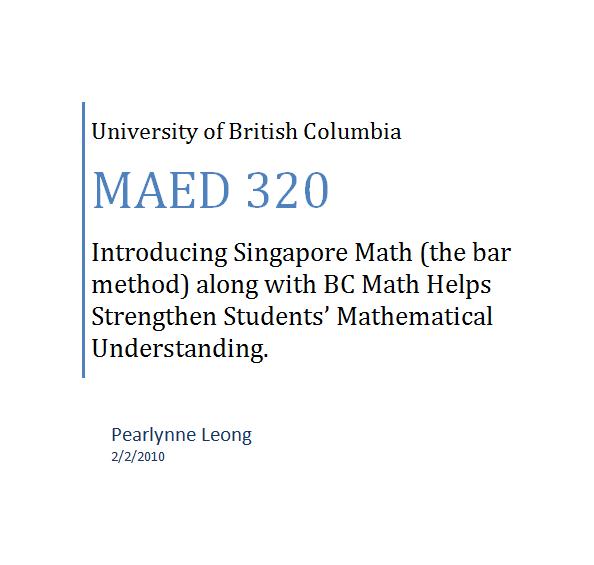In my UBC education program, I wrote a paper, “Introducing Singapore Math (the bar method) along with BC Math helps strengthen students’ mathematical understanding” for a research assignment in my math course.
The bar method introduced in my paper is highly versatile, robust and useful for teaching BC Math. It can scaffold mathematical concepts, like fractions, percentages, algebra, rates of change, etc. Students can also use this tool to sort out and rationalize their thinking process easily.
Since the bar method is highly visual, it can differentiate learning for many students. Even “students with weak reading and math skills” are able to benefit from the simplicity of Singapore Math (Hoven and Garelick 29). Additionally, students with learning disability, such as speech and hearing impairment individuals, as well as language-challenged such as English as Second Language (ESL) students, can also benefit using this method.
I have used this method to teach fractions in my Grade 6/7 class, and had found the results very promising among students. Students readily embraced this concept, found doing math fun and were motivated to take on more challenges.
Examples of this bar method and how to use it can also be found in my paper Artifact 8 – Math Paper.
I highly recommend using this bar method. I am happy to share this method with my colleagues who are looking for new ways to teach and introduce math.

